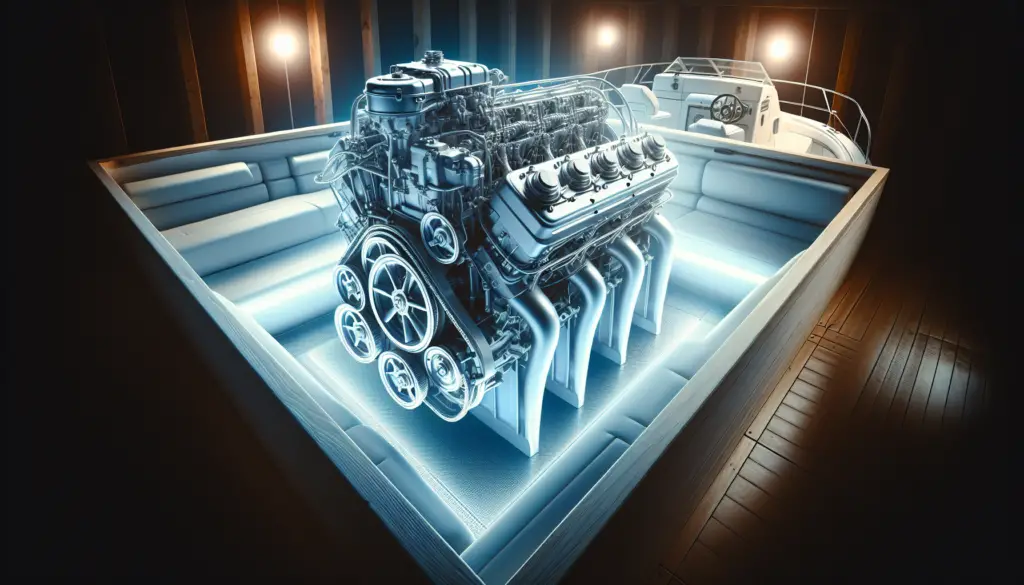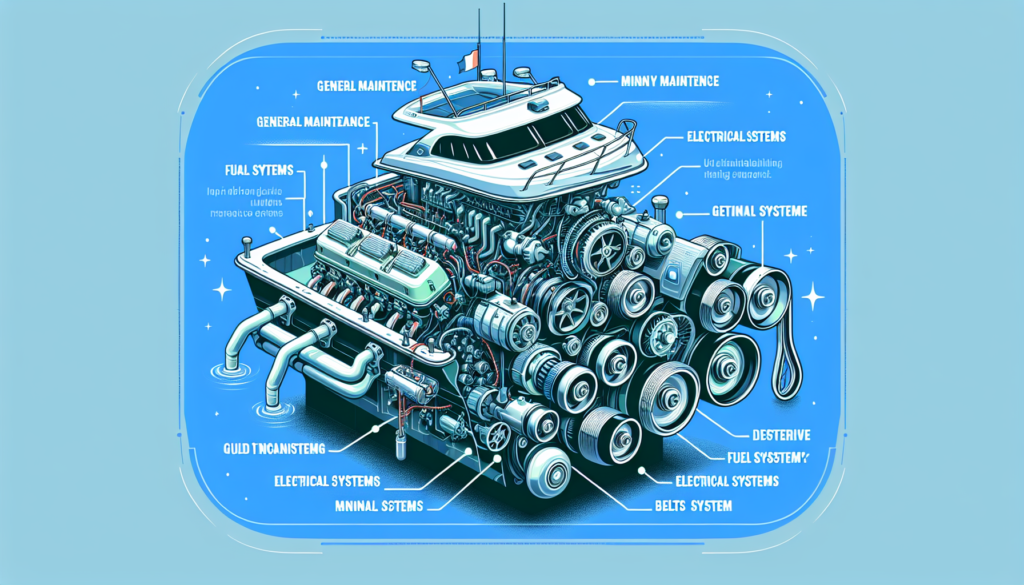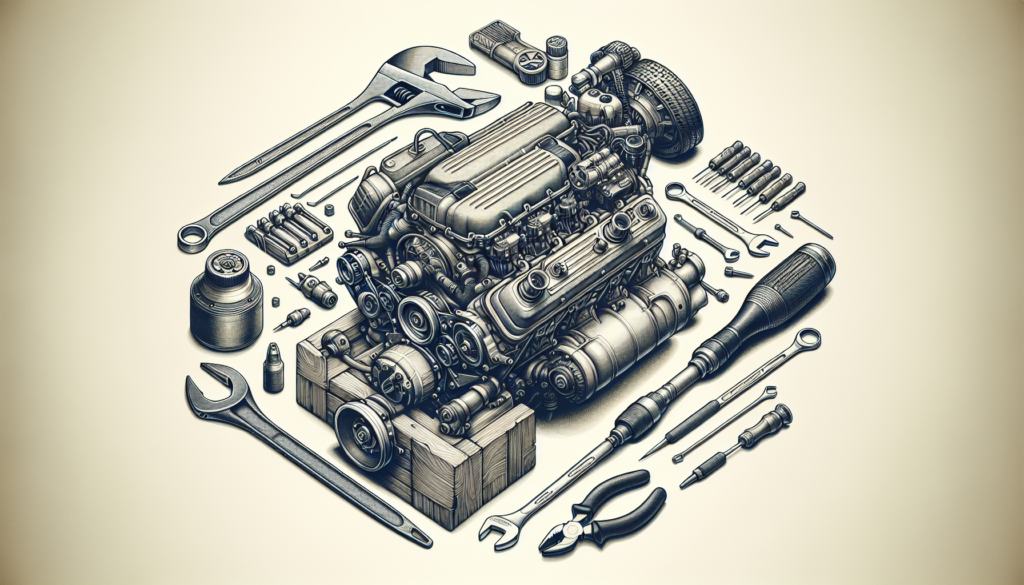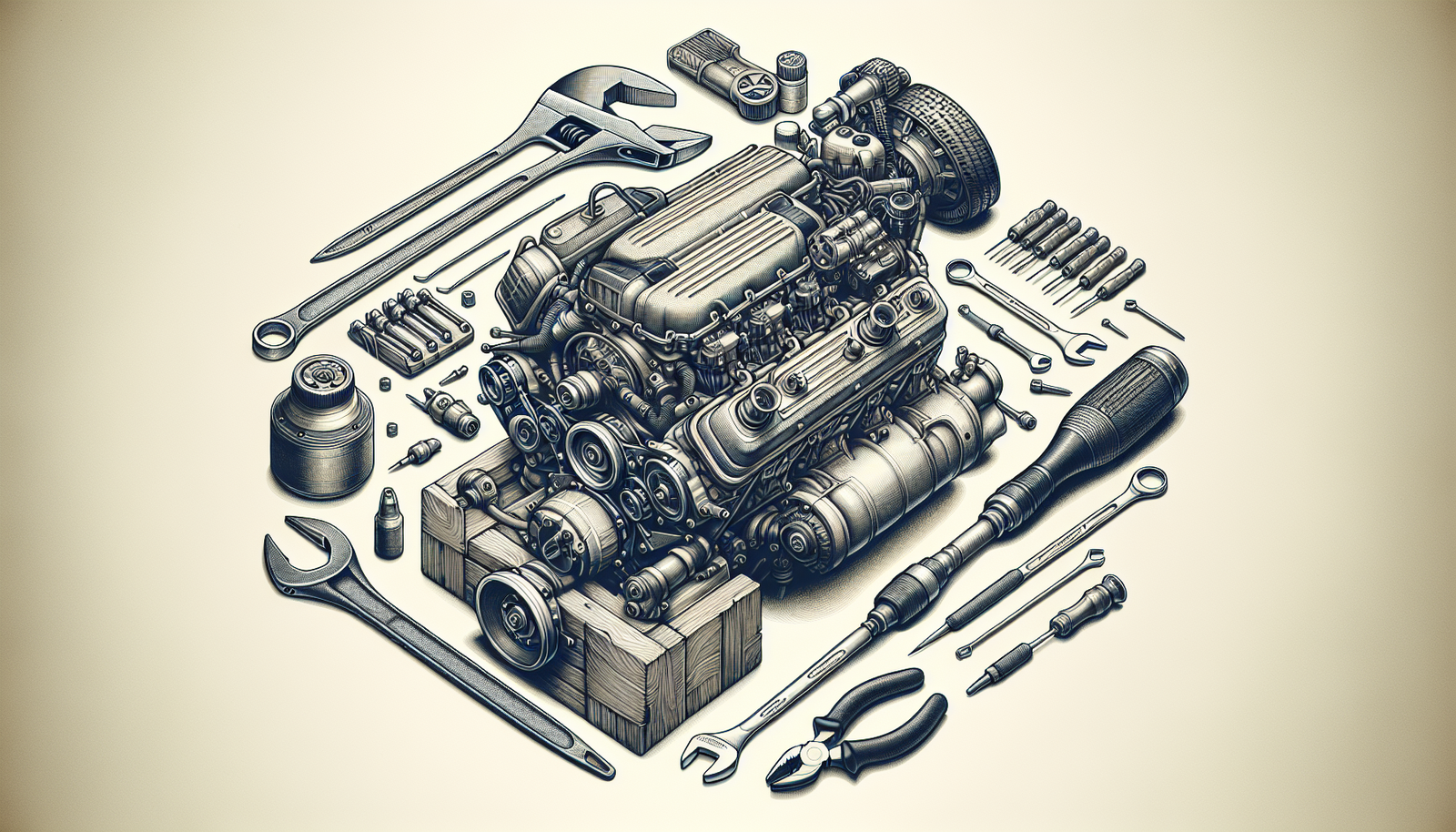With the boating season just around the corner, it’s time to get your boat engine primed and ready for some water action. “The Ultimate Checklist For Preparing Your Boat Engine For The Boating Season” lays out all the essentials you’ll need to consider for smooth sailing ahead. This comprehensive guide talks you through the importance of servicing, checking and maintaining your boat engine ahead of the boating season to ensure your marine escapades are memorable for all the right reasons. So tighten up your life jacket, and let’s set sail on this journey of boat engine preparation.
Understanding Your Boat’s Engine
Understanding the workings of your boat’s engine is crucial to having seamless sailing experiences. Your boat’s performance, safety, and longevity rely heavily on the engine. The first step towards getting the best out of your boat’s engine is becoming familiar with its structure and functionality.
Identifying different parts of the engine
Your boat’s engine comprises various parts, each playing a unique role in its operation. Key components include the cylinder head, pistons, and the crankshaft. The cylinder head forms the top of the engine and contains the valves controlling fuel and air mixture. Pistons, located in the cylinder block, create power by moving up and down the cylinder. The crankshaft, connected to the pistons, translates this linear motion into rotational motion propelling your boat.
Importance of knowing engine specifics
Knowing the specifics of your boat’s engine is vital. It helps you better appreciate its workings and potential issues. This knowledge will enable you to easily identify irregularities and quickly deal with issues before they escalate. It reduces the chances of getting stranded mid-voyage due to engine breakdowns. Furthermore, it allows you to converse more effectively with mechanics during servicing.
Impact of knowledge of engine on maintenance
Knowledge of your boat’s engine significantly affects maintenance practices. It enables you to properly schedule service sessions, facilitating checks or replacements before parts break down. Understanding the engine’s parts and their functions also allows you to conduct some minor maintenance tasks on your own, saving you extra service fees.
Checking the Engine’s Oil Levels
Every great sailor knows the importance of the boat’s engine oil. Engine oil lubricates moving parts, reducing friction and preventing overheating. To ensure your boat’s engine operates efficiently, the oil levels must be optimal.
Required engine oil level for optimal performance
Adequate oil levels are crucial for the smooth running of your boat’s engine. The oil dipstick, engraved with maximum and minimum oil level markers, conveniently informs you of these levels. This requirement differs depending upon the engine type and model, so it’s crucial to refer to your engine’s manufacturer’s guidelines.
How to conduct oil level checks
Checking your boat’s oil level is quite straightforward. Ensure the engine is cool before removing the dipstick. Wipe it clean, reinsert it, then pull it out once more to check the oil level. The oil marking should fall between the maximum and minimum guidelines for optimal performance. Make sure the oil’s color is more honey than black tar, indicating good health.
Resolving low and high oil level issues
If you find the oil level below the acceptable limit, add more oil gradually until it reaches the desired level. Importantly, avoid overfilling, which could cause harmful pressure buildup and leakages. If you have overfilled your oil, drain some of it until it resides within the correct gauge markers. Consistently low or high oil levels might indicate more serious problems necessitating professional attention.

Inspecting the Engine’s Fuel System
Your boat’s fuel system is integral to your engine’s operation, supplying it with the required fuel to create power. Regular inspection of the fuel system ensures its proper functioning and reduces the chances of inconvenient break-downs.
Understanding parts of the engine fuel system
Key components of your engine’s fuel system include the fuel tank, fuel lines, fuel filter, fuel pump, and carburetor or fuel injectors. Each of these parts plays a vital role in fuel transportation and combustion within the engine.
Procedure for checking condition of fuel system
When inspecting your fuel system, pay special attention to any leaks from the fuel tank or lines. Examine the fuel filter for any blockages or damage. Check the carburetor and fuel injectors for any clogs or irregular functions.
Solutions for fuel system issues
If you discover any leaks or clogs, have them addressed immediately. Professional help is recommended, although you might handle simpler tasks like filter replacement. Regular use of quality fuel and keeping your fuel system clean will prevent most issues.
Evaluating Engine Cooling System
Your boat’s engine cooling system prevents overheating, ensuring your engine functions smoothly.
Purpose of engine cooling system
The cooling system functions to regulate engine temperature, maintaining it within optimal limits. It typically comprises a pump, thermostat, and radiator. The coolant absorbs engine heat and radiates it into the atmosphere, maintaining the engine’s temperature.
Regular checks for cooling system
Conduct regular checks on the cooling system. Look out for signs of coolant leaks, check the coolant level, and examine the radiator for any obstructions that may limit airflow. Additionally, inspect the thermostat to ensure it opens and closes as required, allowing coolant flow.
Dealing with cooling system failures
In case of cooling system failures, necessary measures should be taken to address them. Enlist professional help to replace leaking coolant lines or dysfunctional pumps. Remember, persistent overheating can cause severe engine damage.

Ensuring Proper Engine Ignition
The ignition system plays an essential role in starting your boat’s engine and ensuring its smooth operation.
Key elements of engine ignition
The ignition system’s key components include the ignition switch, coil, distributor, spark plugs, and ignition wires. The spark plugs, powered by the ignition coil, initiate combustion by igniting the air-fuel mix in the engine.
Practices for maintaining ignition condition
To maintain your ignition system’s condition, perform regular checks and cleaning. Pay attention to the condition of the spark plugs, replacing them when corroded or worn out. Ensure that the ignition wires are well insulated and devoid of any cracks.
Troubleshooting ignition issues
Issues with ignition commonly manifest as difficulties in starting the engine or misfiring during operation. If your boat experiences such issues, consider replacing the spark plugs or the entire ignition system if necessary. Trust professional help for intricate ignition issues.
Maintaining the Drive Train
The drive train, the system that transmits power from the engine to the propeller, is critical to your boat’s propulsion.
Understanding the drive train’s role in engine functionality
The drive train comprises several components, including the transmission, drive shaft, propeller shaft, and gears. These parts work efficiently together to deliver power from the engine, through the transmission, to the propeller that drives your boat.
Routine maintenance steps for the drive train
Maintaining the drive train involves lubricating the components to reduce wear and checking for any signs of damage or corrosion regularly. You should also ensure the gears shift smoothly, indicating a well-functioning transmission system.
Detecting signs of drive train problems
A faulty drive train will often present symptoms such as difficulty steering or unusual noises during operation. If you notice such issues, it’s crucial to seek professional help to diagnose and resolve them before they worsen.

Checking the Propeller Condition
The propeller is a vital part of your boat’s engine system as it transforms the engine’s power into thrust.
Role of propeller in engine performance
The propeller’s efficiency significantly determines the overall engine performance. A damaged or poorly designed propeller can lead to inefficiencies, decreased speed, and increased fuel consumption.
Procedures for examining propeller health
Examine your propeller regularly for any signs of damage, such as dents, cracks, or bent blades. A damaged propeller can put undue stress on the engine and decrease its efficiency. Also, check that the propeller is firmly secured to avoid any unforeseen issues during your journey.
Addressing propeller damages
Should you identify any propeller damages, have them repaired if minor or replaced when necessary. Always opt for a propeller of the right size, pitch, and material suited to your boat’s engine and usage requirements.
Conducting Regular Engine Cleaning
Regular cleaning of your boat’s engine goes a long way in ensuring its optimum performance and prolonging its life.
Methods for engine cleaning
Engine cleaning involves getting rid of dirt, grime and salt accumulation, particularly from the cooling system. Using a soft brush or compressed air can work effectively in removing the accumulated debris.
Best cleaning solutions to use
When choosing cleaning solutions, opt for environmentally friendly products specifically formulated for marine engines. Avoid harsh chemical cleaners that can corrode the engine components.
Determining frequency of engine cleaning
Establish a regular cleaning schedule. How frequently you should clean your engine depends on the conditions where you sail. For instance, boating in saltwater requires more frequent cleaning than in freshwater. Staying on top of this task will guarantee smooth operations and longevity for your engine.

Replacing Engine Parts if Necessary
Wear and tear of engine components is inevitable, and replacements are sometimes necessary.
Determining necessity of parts replacement
Indications for replacements include persistent issues, deterioration, or breakdown of parts. Regular checks can help spot these issues promptly.
Acquiring appropriate replacement parts
It’s essential to find the right replacement parts that perfectly match your boat’s engine specifications. Using inappropriate or substandard parts could lead to substantial engine damage. Always refer to your engine’s manufacturer guidelines to ensure correct part compatibility.
Proper procedures for replacing engine parts
Engine part replacement should be carried out consciously and according to manufacturer instructions. If you’re unsure about doing it yourself, it’s safer to depend on professionals. This will safeguard your engine’s integrity and performance.
Ensuring Preparation for Possible Engine Troubles
Even with proper maintenance, engine troubles may emerge, and it’s always best to be prepared for such occurrences.
Significance of preparedness for engine troubles
Preparedness can spare you unnecessary inconveniences or the danger of being stranded. Having knowledge about handling common issues and having necessary tools and spare parts on board can make a significant difference.
Keeping essential engine tools and equipment onboard
Essential tools for handling engine issues include the owner’s manual, a basic tool kit, spare fuel filters, engine oil, coolants, spark plugs, and belts. These preliminaries will help you deal with minor issues efficiently.
Learning initial troubleshooting solutions for common engine problems
Understand basic troubleshooting solutions for common engine problems: how to replace spark plugs, change the oil, replace filters, and diagnose common issues. This knowledge will serve as a first aid solution before getting professional help.
In conclusion, proper boat engine care and maintenance are crucial in guaranteeing seamless sailing experiences and prolonging your engine’s life. Familiarize yourself with your boat’s engine, conduct regular checks and maintenance, and stay prepared for possible engine troubles. Remember, it’s always better and less expensive to prevent issues than to solve them.


[…] The first step is to drain the coolant from your boat’s engine. Use a drain pan to collect the coolant to prevent spilling this toxic substance into the environment. […]
[…] the open waters but uncertain about your boat engine’s readiness? Don’t fret! “The Ultimate Checklist for Preparing Your Boat Engine for the Boating Season” is just what you need. This comprehensive guide provides a meticulous […]